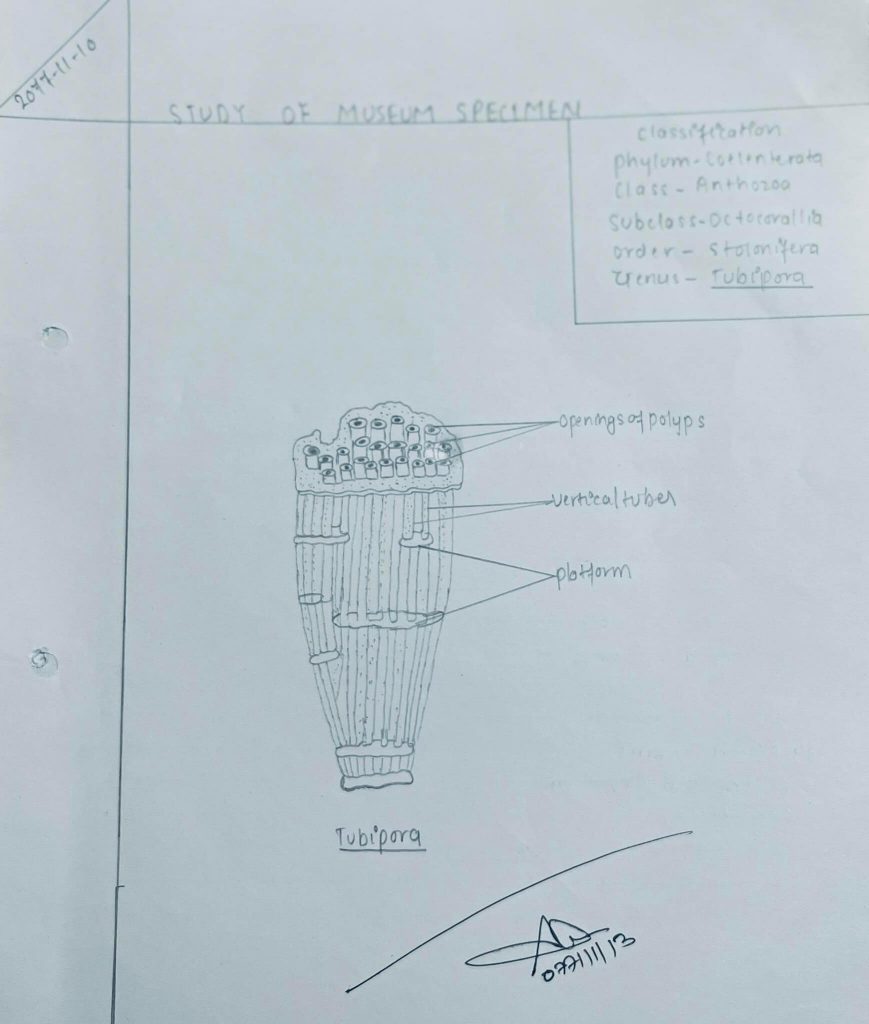Contents: Click for quick access
Comments of Tubipora
Distribution: –
Tubipora is found on coral reefs in warm waters of Atlantic, Indian and Pacific oceans.
Habit and habitat :-
Tubipora is a marine colonial polypoid Anthozoan.
character:-
1) Multicellular, issue grade, diploblastic and acoelomate.
2) Exclusively marine and polypoid, medusoid stage absent:symmetry, hexamerous.
3) Polyps always bear eight pinnate hollow tentacles and eight complete mesenteries; single ventral siphonoglyph, polyps dimorphic in some form.
4) Colony consists of simple or branched stems arising from a creeping base each stem is very elongated, polyp bearing lateral polyps.
Economic importance:-
1) Decorative value
2) Jewellery and Ornament.
3) Medicine
4) Building and road construction
5) Cement industry.
Diagram of Tubipora

Tubipora
